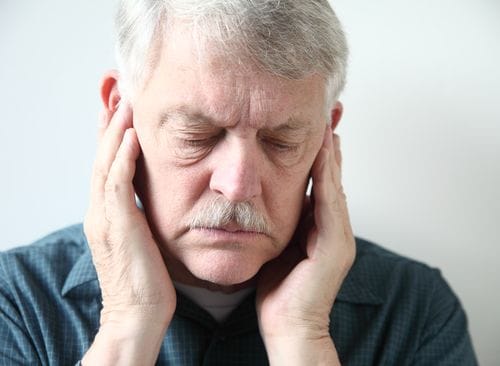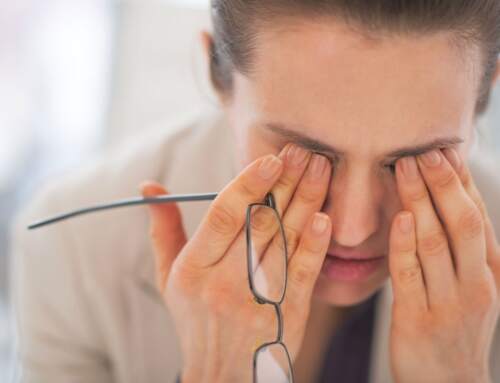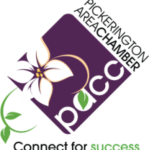How to Never Get a Concussion But What To Do If It Happens
Have you ever had a concussion? Have you had a head injury from sports, a fall, or a car accident that caused you to lose consciousness, have a headache, be confused, have blurred vision, throw up, or lose your short-term memory?
 If so, you most likely had a concussion. A concussion is a traumatic brain injury and although not deadly can cause some short and long-term problems.
If so, you most likely had a concussion. A concussion is a traumatic brain injury and although not deadly can cause some short and long-term problems.
Once you have one, it is easier to get consecutive ones. The long-term effects of repeated concussions could be long-term memory loss.
Head injuries like concussions are prevalent in young athletes. High school athletes that play football have the highest risk of concussion.
Prevention is key! Wear your seatbelt, wear a helmet, and be smart! It is especially important for ice hockey and football players to wear helmets. Their future sports career counts on it. It will not only prevent concussions but also prevent skull fracture. If you think you may be experiencing this head injury, call your doctor!
What Are the Concussion Symptoms and Signs?
Commonly reported concussion symptoms:
- Loss of consciousness after any trauma to the head
- Confusion
- Headache
- Nausea or vomiting
- Blurred vision
- Loss of short-term memory (you may not remember the actual injury and the events some time before or after the impact)
- Perseverating (repeating the same thing over and over)
When to Seek Medical Care for Concussion or Brain Injury
Call the doctor about any of the following situations. The doctor will recommend home care or physical therapy, set up an appointment to see the affected individual or send the person to a hospital’s emergency department.
- A person struck a hard object with the head (for example: tile floor, ice, bathtub) but did not lose consciousness
- Mild dizziness or nausea after a head injury
- Loss of memory of the event (amnesia) for just a few minutes
- Mild headache with no vision disturbances
Go to an emergency department by ambulance in the following situations.
- Severe head trauma, for example, a fall from more than the height of the person or a hard fall onto a hard surface or object with resulting bleeding or laceration.
- Any child that loses consciousness as the result of a head injury.
- Prolonged loss of consciousness (longer than two minutes)
- Any delayed loss of consciousness (for example, the injured person is knocked out only momentarily, then is awake and talking, then loses consciousness again)
- Vomiting more than once
- Confusion that does not go away quickly
- Restlessness or agitation
- Extreme drowsiness, weakness, or inability to walk
- Severe headache
- Loss of memory of the event (amnesia)
- Perseverating (saying the same thing over and over)
- Seizures or convulsions
- Slurred speech
- Someone who takes warfarin (Coumadin) or platelet inhibitors clopidogrel (Plavix) and aspirin (Aggrenox) for a medical problem and suffers a significant blow to the head.
- If the person fails to regain consciousness after two minutes, however, or the injury is very severe even if two minutes have not passed, DO NOT move the person. Prevent movement of the neck, which may exacerbate spinal injuries. If the person needs to vomit, carefully roll the person onto his or her side without
 turning the head. Call 911 immediately for help.
turning the head. Call 911 immediately for help.
If you are unsure of the severity of the injury, take the person to the emergency department immediately.
Should an injured person fall asleep?
The myth that parents should keep their children awake after they’ve been struck on the head is fortunately a false one. Children’s emotional response to a minor fall can be much worse than their physical injury. They will cry and appear distressed, but as the parent rushes them to the hospital, children may begin to calm down. Because they have expended a lot of physical and emotional energy crying, they will often want to go to asleep.
- You do not need to keep the patient awake. In many cases it may be helpful to the emergency doctor to be able to awaken the person who is now calmer and rested and will behave normally. This gives the doctor a better assessment of the severity of the head injury.
- A person who has experienced a head injury and then cannot be awakened or is extremely difficult to rouse from their nap should see a doctor.
Self-Care at Home for a Concussion
Bleeding under the scalp, but outside the skull, creates a “goose egg” or large bruise (hematoma) at the site of the head injury. A hematoma is common and will go away on its own with time. The use of ice immediately after the trauma may help decrease its size.
- Do not apply ice directly to the skin – use a washcloth as a barrier and wrap the ice in it. You may also use a bag of frozen vegetables wrapped in cloth, as this conforms nicely to the shape of the head.
- Apply ice for 20-30 minutes at a time and repeat about every two to four hours. There is little benefit after 48 hours.
- Rest is important to allow the brain to heal.
In 2010, the American Academy of Neurology called for any athlete of having a suspected concussion to be removed from play until the athlete is evaluated by a physician.
The Centers for Disease Control recommends implementing a 4-step plan for a suspected concussion due to a sports injury:
- Remove the athlete from play.
- A health care professional experienced in evaluating sports related concussions should evaluate the athlete. Do not try to judge the severity of the injury yourself.
- Inform the athlete’s parents or guardians about the possible concussion and give them the fact sheet on concussion.
- Keep the athlete out of play the day of the injury and until a sports medicine athletic trainer, experienced in evaluating for concussion, says they are symptom-free and it’s OK to return to play.
A repeat concussion that occurs before the brain recovers from the first – usually within a short period of time (hours, days, or weeks) – can slow recovery or increase the likelihood of having long-term problems. In rare cases, repeat concussions can result in edema (brain swelling), permanent traumatic brain damage, and even death.
What Is the Treatment?
Bed rest, fluids, and a mild pain reliever such as acetaminophen (Tylenol) may be prescribed for mild traumatic brain injury.
- Ice may be applied to bumps to relieve concussion symptoms like pain and decrease swelling.
- The doctor numbs the cuts with medication such as lidocaine, by injection or topical application. The wound usually is closed with skin staples, stitches (sutures), or, occasionally, a skin glue called cyanoacrylate (Dermabond).
Craniosacral Therapy would be the ideal therapy to choose after a brain injury like this! It will gently reset things. We have massage therapists at Body Ache Escape Massage Center in Columbus, Ohio that specializes in craniosacral!

 turning the head. Call 911 immediately for help.
turning the head. Call 911 immediately for help.




